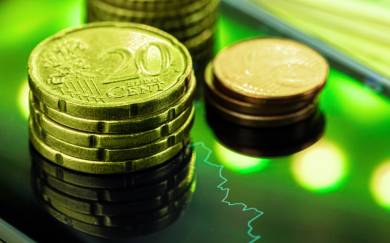Gold Tries to Hold Above $2000 - Hard Landing Ahead?

Przemysław Radomski 08.03.2022 16:02
Gold has hit $2,000 but is still struggling to maintain that historical level. It has already tried 8 times - will the ninth attempt succeed? Many indications make this doubtful.
Gold is attempting to break above the $2,000 milestone, and miners are trying to break above their declining resistance line. Will they manage to do so, and if so, how long will the rally last?
Yesterday, gold didn’t manage to close above the $2,000 level and it’s making another attempt to rally above it in today’s pre-market trading. However, will it be successful?
Given the RSI above 70 and the strength of the current resistance, it’s doubtful.
In fact, nothing has changed with regard to this likelihood since yesterday, so what I wrote about it in the previous Gold & Silver Trading Alert remains up-to-date:
Gold touched $2,000 in today’s pre-market trading, which is barely above its 2021 high and below its 2020 high. Crude oil is way above both analogous levels.
In other words, gold underperforms crude oil to a significant extent, just like in 2003.
Interestingly, back in 2003, gold topped when crude oil rallied about 40% from its short-term lows (the late-2002 low).
What happened next in 2003? Gold declined, and the moment when crude oil started to visibly outperform gold was also the beginning of a big decline in gold stocks.
That makes perfect sense on the fundamental level too. Gold miners’ share prices depend on their profits (just like it’s the case with any other company). Crude oil at higher levels means higher costs for the miners (the machinery has to be fueled, the equipment has to be transported, etc.). When costs (crude oil could be viewed as a proxy for them) are rising faster than revenues (gold could be viewed as a proxy for them), miners’ profits appear to be in danger; and investors don’t like this kind of danger, so they sell shares. Of course, there are many more factors that need to be taken into account, but I just wanted to emphasize one way in which the above-mentioned technical phenomenon is justified.
Back in 2003, gold stocks wiped out their entire war-concern-based rally, and the biggest part of the decline took just a bit more than a month. Let’s remember that back then, gold stocks were in a very strong medium- and long-term uptrend. Right now, mining stocks remain in a medium-term downtrend, so their decline could be bigger – they could give away their war-concern-based gains and then decline much more.
Mining stocks are not declining profoundly yet, but let’s keep in mind that history rhymes – it doesn’t repeat to the letter. As I emphasized previously today, back in 2003 and 2002, the tensions were building for a longer time, and it was relatively clear in advance that the U.S. attack was going to happen. This time, Russia claimed that it wouldn’t attack until the very last minute before the invasion. Consequently, the “we have to act now” is still likely to be present, and the dust hasn’t settled yet – everything appears to be unclear, and thus the markets are not returning to their previous trends. Yet.
However, as history shows, that is likely to happen. Either immediately, or shortly, as crude oil is already outperforming gold.
The above chart features the GDXJ ETF. As you can see, the junior miners moved to their very strong resistance provided by the declining resistance line. This resistance is further strengthened by the 38.2% Fibonacci retracement, and the previous (late-2021) high. This means that it’s particularly strong, and any breakout here would likely be invalidated shortly.
Given the clear sell signal from the RSI indicator, a turnaround here is even more likely. I marked the previous such signals to emphasize their efficiency. When the RSI was above 70, a top was in 6 out of 7 of the recent cases, and the remaining case was shortly before the final top, anyway.
This resistance seems to be analogous to the $2,000 level in gold.
By the way, please note that gold tried to break above $2,000 several times:
twice in August 2020;
twice in September 2020 (once moving above it, once moving just near this level);
once in November 2020 (moving near this level);
once in January 2021 (moving near this level);
once in February 2022 (moving near this level).
These attempts failed in each of the 7 cases mentioned above. This is the eight attempt. Will this very strong resistance break this time?
Given how much crude oil has already soared, and how both markets used to react to war tensions in the case of oil-producing countries, it seems that the days of the rally are numbered.
Moving back to the GDXJ ETF, please note that while gold is moving close to its all-time highs, the junior miners are not doing anything like that. In fact, they barely moved slightly above their late-2021 high. They are not even close to their 2021 high, let alone their 2020 high. Instead, junior mining stocks are just a bit above their early-2020 high, from which their prices were more than cut in half in less than a month.
In other words, junior miners strongly underperform gold, which is a bearish sign. When gold finally declines – and it’s likely to, as geopolitical events tend to have only a temporary effect on prices, even if they’re substantial – junior miners will probably slide much more than gold.
One of the reasons is the likely decline in the general stock market.
I recently received a question about the impact the general stock market has on mining stocks, as the latter moved higher despite stocks’ decline in recent weeks. So, let’s take a look at a chart that will feature junior mining stocks, the GLD ETF, and the S&P 500 Index.
Before the Ukraine crisis, the link between junior miners and the stock market was clear. Now, it's not as clear, but it’s still present. Juniors only moved to their late-2021 highs, while gold is over $100 above those highs. Juniors underperform significantly, in tune with the stock market's weakness.
The gold price is still the primary driver of mining stock prices – including junior mining stocks. After all, that’s what’s either being sold by the company (that produces gold) or in the properties that the company owns and explores (junior miners). As gold prices exploded in the last couple of weeks, junior miners practically had to follow. However, this doesn’t mean that the stock market’s influence is not present nor that it’s going to be unimportant going forward.
Conversely, the weak performance of the general stock market likely contributed to junior miners’ weakness relative to gold – the former didn’t rally as much as the latter. Since the weakness in the general stock market is likely to continue, and gold’s rally is likely to be reversed (again, what happened in the case of other military conflicts is in tune with history, not against it), junior miners are likely to decline much more profoundly than gold.
Speaking of the general stock market, it just closed at the lowest level since mid-2021.
The key thing about the above chart is that what we’ve seen this year is the biggest decline since 2020, and the size of the recent slide is comparable to what we saw as the initial wave down in 2020 – along with the subsequent correction. If these moves are analogous, the recent rebound was perfectly normal – there was one in early 2020 too. This also means that a much bigger decline is likely in the cards in the coming weeks, and that it’s already underway.
This would be likely to have a very negative impact on the precious metals market, in particular on junior mining stocks (initially) and silver (a bit later).
All in all, it seems that due to the technical resistance in gold and mining stocks, the sizable – but likely temporary (like other geopolitical-event-based-ones) – rally is likely to be reversed shortly. Then, as the situation in the general stock market deteriorates, junior miners would be likely to plunge in a spectacular manner.
Thank you for reading our free analysis today. Please note that the above is just a small fraction of today’s all-encompassing Gold & Silver Trading Alert. The latter includes multiple premium details such as the targets for gold and mining stocks that could be reached in the next few weeks. If you’d like to read those premium details, we have good news for you. As soon as you sign up for our free gold newsletter, you’ll get a free 7-day no-obligation trial access to our premium Gold & Silver Trading Alerts. It’s really free – sign up today.
Przemyslaw Radomski, CFAFounder, Editor-in-chiefSunshine Profits: Effective Investment through Diligence & Care
* * * * *
All essays, research and information found above represent analyses and opinions of Przemyslaw Radomski, CFA and Sunshine Profits' associates only. As such, it may prove wrong and be subject to change without notice. Opinions and analyses are based on data available to authors of respective essays at the time of writing. Although the information provided above is based on careful research and sources that are deemed to be accurate, Przemyslaw Radomski, CFA and his associates do not guarantee the accuracy or thoroughness of the data or information reported. The opinions published above are neither an offer nor a recommendation to purchase or sell any securities. Mr. Radomski is not a Registered Securities Advisor. By reading Przemyslaw Radomski's, CFA reports you fully agree that he will not be held responsible or liable for any decisions you make regarding any information provided in these reports. Investing, trading and speculation in any financial markets may involve high risk of loss. Przemyslaw Radomski, CFA, Sunshine Profits' employees and affiliates as well as members of their families may have a short or long position in any securities, including those mentioned in any of the reports or essays, and may make additional purchases and/or sales of those securities without notice.
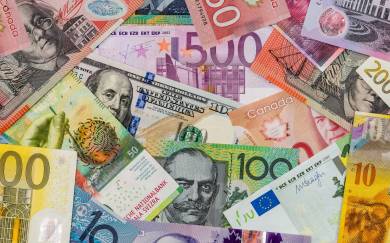








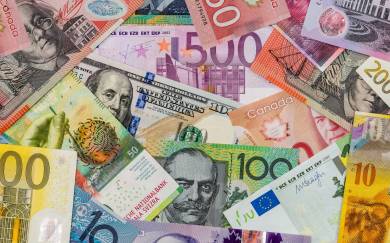



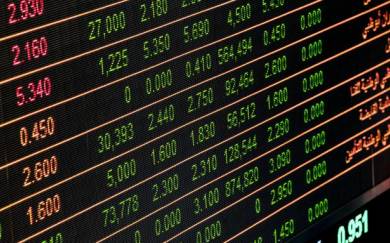

 Mikołaj Marcinowski 10.03.2022 14:39
Mikołaj Marcinowski 10.03.2022 14:39



























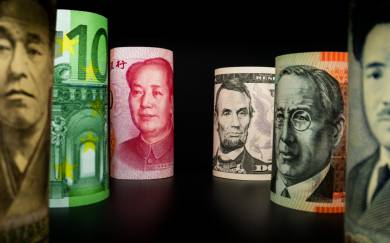

 ING Economics 18.10.2022 11:11
ING Economics 18.10.2022 11:11
